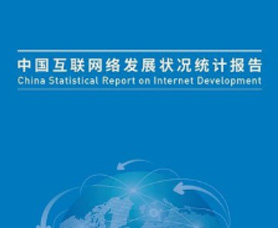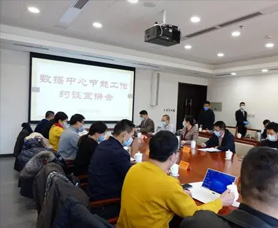| 摘要:本文为美国著名数据分析网站DZone分析师Tom Smith与Exaptive的副总裁Matt Coatney的专访对话,对人工智能和机器学习的未来做了深度的探讨。 |
本文为美国著名数据分析网站DZone分析师Tom Smith与Exaptive的副总裁Matt Coatney的专访对话,对人工智能和机器学习的未来做了深度的探讨。Exaptive是一家美国俄克拉荷马州以提供大数据分析产品及服务为主的初创企业。
本文由可译网言午二二 , Amanda沈两位朋友翻译。

Exaptive的副总裁Matt Coatney
下面是正文:
感谢Exaptive的副总裁Matt Coatney抽空与我谈人工智能和机器知识的现状,以及他如何是看待其发展的。
Tom Smith: 成功的人工智能/机器知识策略的关键是什么?
Matt Coatney:与DevOps(开发运营)不同的是,它涉及到更多的人员和方法,因为新技术正在给商业管理战略带来变革。一方面,它可以替代人们所做的工作,并且更有效、可靠、高效地完成这些任务。另一方面,以前不可行的新商业模式变得可行。
Matt分享了一些例子:
-
在医学方面,IBM的Watson在不到10分钟内就发现了一组完全不同于一组医生所认为的白血病类型。
-
硅谷的一家生物科技公司Atomwise正在寻找现有的药物来应用于新目标,并在一天内发现了两种可阻止埃博拉病毒传播的药物。这种类型的研究往往都是需要几年时间。
Tom Smith:企业如何通过人工智能和机器知识来获得更多的大数据?
Matt Coatney: 与需要解决特殊商业问题的技术相比,企业更多地把时间花费在他们认为他们所需要的技术上。企业需要思考他们正试图解决的问题以及如何使解决方案让客户满意。思考如何让解决方案生效,以便你可以实现一个积极的回报率,进一步谈下一个项目和合作机会。设定你的成功标准并快速取胜。这与我们过去20年来在IT方面所做的项目没有什么区别,我们只需要牢记最佳方法。
Tom Smith: 问:在过去的一年里人工智能/机器学习是如何变化的?
Matt Coatney:在过去的五六十年中许多方法一直是一样的,只是我们有了更强大的计算机,有更多内存和优化算法,比如深度学习,因此我们能在很短的时间内获得更好的结果。例子包括Facebook的面部识别和Google的无人驾驶轿车。另外,我们现在有这样的人工智能服务,公司可以从电脑上租用时间,发出请求,并在记录时间内获取信息。这降低了准入门槛,同时保证了世界任何组织得到与Facebook和Google相同的质量水平。
Tom Smith:你用什么技术解决方案来收集和分析数据?
Matt Coatney: 大多数企业专注于大数据“Hadoopesque”工具。我们也可以这么做,但是我们也可以使用如SQL、NoSQL、Microsoft和Python’s的scikit-learn库等较小的数据工具来找到价值。无论数据规模如何,还有许多价值有待从现有数据中去挖掘。
Tom Smith:客户用人工智能/机器知识来解决哪些现实问题?
Matt Coatney:任何有关预测、重新连接或内容预测—Netflix风格的应用程序。金融模型和高级财务模型的大众化。此外,可帮助机构通过标记概念、关键词等从内容中获得更多价值的内容和知识管理工具。
Tom Smith:您认为阻碍公司从人工智能/机器学习获利的最常见的问题是什么?
Matt Coatney:公司关注工具和平台而不是他们正在试图解决的企业问题。他们需要把炒作与现实分开,了解工具能做什么,不能做什么。营销炒作正在被收购,并产生不切实际的期望。这需要对工具进行更好的审核与了解。要明白,为工业培训人工智能和使用例子(例如,律师如何写作和交谈)需要一定的时间。
Tom Smith: 对于人工智能/机器知识的可持续发展的最大机会在哪里?
Matt Coatney:我对于人工智能作为一种服务而感到兴奋,它为开发人员和想要创业的企业家迅速提供了机会,而且无需太多费用。
-
知识空间里的决策支持和自动化。对问题更开阔的看法带来更好、更中肯的解决方案。
-
机器人使物质世界和虚拟世界融合。
-
使用数据解决商业问题。谷歌的数据中心每天使用25%的核电站,谷歌使用Deep Mind来优化所有服务器,并能降低15%到20%的能耗。最终,每个企业都能够实现相同类型的运营成本节省。
Tom Smith:您对当今人工智能/机器学习最大的关注是什么?
Matt Coatney:人工智能会被善用还是误用?它是中性的。取决于它如何被应用和谁来使用它。我们需要国际监督。它已经被用于网络战。要避免陷入局部最大值。在过去的60到70年里,我们使用了相同的硬件和软件架构,完成了前所未有的复杂工作。我们需要探索不同的方法来成倍地提高性能。
Tom Smith:从事人工智能/机器学习项目的开发者需要哪些技能?
Matt Coatney:从软技能开始。最好的开发人员和数据科学家注意提高他们的项目管理、沟通和时间管理技能。专注于理解抽象概念,并尽可能全面地使用不同的语言和技术。拥抱创造性的破坏,因为景色是迅速流动和变化的。
Tom Smith:你认为开发人员需要了解的关于人工智能和机器学习的问题哪些我还没有问到?
Matt Coatney:关于术语有很多误解。当我们使用这些术语时,我们需要弄清楚我们的意思:
-
机器学习是指我们如何使用软件来学习东西。
-
人工智能是机器学习的代名词,但往往意味着更高级的、人类的能力水平。
-
深度学习是一种特定的机器学习技术,能够处理更精妙的学习,往往与人工智能有关。

英文原文:
Thanks to Matt Coatney, V.P. Services at Exaptive for taking the time to talk with me about the state of AI and machine learning today and how he sees it evolving.
Q: What are the keys to a successful AI/machine learning strategy?
A: Not unlike the DevOps movement, it has more to do with the people and the approach, since the new technology is introducing a change in business management strategy. On the one hand, it can replace tasks that people have been doing and do those tasks more effectively, reliably, and efficiently. On the other hand, new business models are feasible where they weren’t before.
A couple of examples Matt shared:
In medicine, IBM’s Watson detected a completely different strain of leukemia than the group of doctors had even considered in less than 10 minutes.
Atomwise, a Silicon Valley biotech, is looking for existing drugs to apply to new targets and found two drugs that prevented the spread of Ebola in one day. This type of research used to take years.
Q: How can companies get more out of big data with AI and machine learning?
A: Companies spend too much time on the technology they think they need versus focusing on the technology needed to solve a particular business problem. Companies need to think about the problem they are trying to solve and how to make the solution palatable to the consumer. Think about how to make the solution effective so you can realize a positive ROI and move on to the next project or opportunity. Define your success metrics and get quick wins. It’s not that different than the projects we’ve been doing in IT for the past 20 years, we just need to keep the best practices in mind.
Q: How has AI/machine learning changed in the past year?
A: A lot of approaches have been the same for the last 50 to 60 years, it’s just that we have far more powerful computers with more memory and optimized algorithms like deep learning, so that we can now get better results in a fraction of the time. Examples include Facebook’s facial recognition and Google’s self-driving cars. In addition, we now have AI as a service where companies can rent time from a computer, issue requests, and get information back in record time. This lowers the barriers to entry while ensuring any organization gets the same level of quality as the Facebooks and Googles of the world.
Q: What are the technical solutions you use to collect and analyze data?
A: Most companies focus on the big data “Hadoopesque” tools. We can do that, but we also find value in smaller data using tools like SQL, NoSQL, Oracle, Microsoft, and Python’s scikit-learn library to get novel results without investing millions. There is still a lot of value to be mined from existing data regardless of size.
Q: What real-world problems are your client solving with AI/machine learning?
Anything around forecasting, reconnecting, or predicting content — Netflix-style applications. Financial modeling and the democratization of advanced financial models. Also, content and knowledge management tools that help organizations get more insight and value from their content by tagging concepts, keywords, etc.
Q: What are the most common issues you see preventing companies from realizing the benefits of AI/machine learning?
Companies are focusing on tools and platforms instead of the business problem they are trying to solve. They need to separate the hype from reality, understanding what tools can and cannot do. The marketing hype is being bought and creating unrealistic expectations. There needs to be better vetting and understanding of the tools. Understand that it takes time to train AI for the industry and use case (e.g., how lawyers write and talk).
Q: Where do you see the biggest opportunities in the continued evolution of AI/machine learning?
A: I’m excited about AI as a service and the opportunity that provides for developers and entrepreneurs looking to start a business quickly without a lot of expense.
Decision support and automation in the knowledge space. Greater perspective on problems leads to better, less biased, solutions.
The merge of the physical and virtual world with robotics.
Use data to solve business problems. Google’s data centers use 25% of a nuclear power plant every day. Google used Deep Mind to optimize all their servers and reduced energy consumption by 15 to 20%. Ultimately every business will be able to realize the same type of OPEX savings.
Q: What are your biggest concerns regarding the state of AI/machine learning today?
A: Will AI be used for good or evil? It is neutral. It depends on how it’s applied and who applies it. We need international oversight. It is already being used in cyberwarfare.
Avoid getting stuck in a local maximum. We’ve used the same hardware and software architecture for the last 60 to 70 years to do something infinitely more complex than we’ve ever done before. We need to explore different approaches to exponentially improve performance.
Q: What skills do developers need to work on AI/machine learning projects?
A: Start with soft skills. The best developers and data scientists have paid attention to improving their project management, communication, and time management skills. Focus on understanding abstract concepts and be as well-rounded as you can with different languages and technologies. Embrace creative destruction since the landscape is fluid and changing rapidly.
Q: What have I failed to ask that you think developers need to know about AI and machine learning?
There is a lot of misconception around terminology. We need to get clarity about what we mean when we use these terms:
Machine learning is how we use software to learn something.
AI is synonymous with machine learning but tends to connote a more advanced, human level of capability.
Deep learning is a specific machine learning technique that is capable of handling more nuanced learning, which tends to be associated with AI.
End
编辑:silence


 评论表单加载中...
评论表单加载中...




